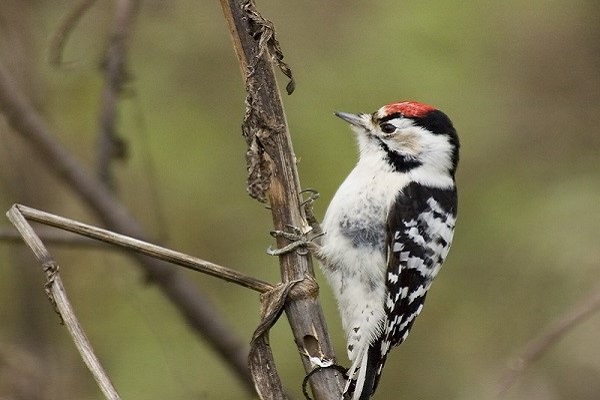
- Brian Moss (President)
- AAAC Wildlife Removal
11/28/2022 Total words : 1242
What Is the Largest Woodpecker Ever Recorded?
The wood-pecking ability alone is already a wow factor for woodpeckers. How much more when we find out these animals can grow large too? In the United States and many places worldwide, woodpecker pecking is considered a sign of friendship and happiness. If you pay close attention, distinctive sounds come from woodpeckers' drilling and drumming. And around the world, they have over 300 species. So there is a solid odd that these creatures will have different sizes, from being unbelievably small to intriguingly big. Let's find out the largest woodpecker ever recorded! What is the largest woodpecker known? The largest woodpecker in the world is known as the Imperial woodpecker. Measuring up to 23.6 inches (60 cm), this bird resides in Mexico's Sierra Madre Occidental range. These species count as critically endangered as they disappeared almost a century ago and no living specimen has been recorded since 1956. The Three Largest Woodpeckers Recorded Among all species of woodpeckers, three of their abundant populations gain prominence in size. Here are the largest woodpeckers: Largest Woodpecker: Imperial The Imperial Woodpecker is the largest of its kind, as mentioned earlier. It can grow up to 23.6 inches (60 cm), with a wingspan reaching 30 inches. The last recorded sighting of this species was in 1956 in Mexico's Sierra Madre Occidental range. They have black bodies with large white stripes on their wings. The male has a red crest, while the female has a black crest. These woodpeckers create large nests by excavating holes in rotten trees. They primarily feed on insect larvae, usually hiding under the barks of dead trees. Imperial woodpeckers face the challenge of extinction because each breeding pair needs to situate in a large area of forest to survive. It's known to be at least 10 square miles. So with extreme deforestation in Mexico, these species found it challenging to reproduce and multiply. Largest Woodpecker: Ivory-Billed Woodpecker The Ivory-Billed Woodpecker is another species that has stirred intrigue over the years regarding its existence. It is another large woodpecker with an ivory-bill and measures 21 inches (51 cm). This species is only found in Cuba and South America. In the 1880s, the Ivory-Billed Woodpecker was already classed as endangered. They were thought to be extinct not just once but many times in their lifetime. This is because when they're finally declared extinct, evidence and sightings of a small population suddenly appear and declare existence. Hence, it has been removed from the extinct species list many times, only to be returned when it disappears without a trace. These species prefer forest habitats. But because of extreme logging and deforestation, they are now classified as near extinction. Currently, there is no knowledge if the remaining individuals are thriving to live or if they've unfortunately lost the battle against nature. The Ivory-Billed Woodpeckers are black with white patches on their neck and a little white patch on their wings. Like other species, the males have a red crest, while the females have a black. Largest Woodpecker: Pileated Woodpecker The Pileated Woodpecker is another member of the largest species bagging North America's largest woodpecker title (except the Ivory-Billed Woodpecker, which is presumed extinct). It is native to North America and is found in some parts of Canada. They can measure 16 to 19.1 inches (48.5 cm). They are not as rare as the Imperial or Ivory-billed woodpeckers but are still threatened by deforestation in some areas. These species got their name from the Latin word pileatus, meaning "capped," which refers to their vibrant red crest. They have black bodies with white marks on their face and throat areas. They have a rich diet of insects like wood-boring beetle larvae, carpenter ants, bees, fruit, nuts, and berries. They may also drill deeper than usual on dead, large trees to invade ant nests. What makes these species unique is that instead of the traditional round hole, they often have rectangular holes when they're foraging for their prey. In addition, the males of these species showcase their drilling by making a nest before they mate with females. How did they get that large? The woodpeckers' large size is an evolutionary advantage for these species. It allows them to reach deep crevices where other birds can't, which makes it easier for them to find food. Their long tongue also helps in this department as they can reach up to 3 inches (7.5 cm). The factors that affect woodpeckers' size are their diet and their habitat. Woodpeckers with a more varied diet tend to be larger than those without. This is because they need the extra energy to fuel their body for all the different types of food they consume. As for habitat, woodpeckers living in forests are often larger than in other areas. This is because there is an abundance of food sources in forests, which allows them to grow to their full potential. The large size of these woodpeckers also makes them more resistant to predators. Their size intimidates most predators, and their sharp beaks can cause severe damage. What is the average height and size of a woodpecker? Some woodpeckers can be about the size of a crow. The average height of a woodpecker is between 16 and 19 inches (41 and 48 cm), with a wing span of up to 30 inches (76 cm). The average wingspan is between 38 and 46 inches (97 and 117 cm). The average weight is between 56 and 91 grams (2 and 4 ounces). All of these depend on the species. Some woodpeckers are very small, like the Downy Woodpecker, which only measures up to 7 inches (18 cm). On the other hand, some woodpeckers are very large, like the Pileated Woodpecker, which can measure up to 19.1 inches (48.5 cm). Want To Stop The Drumming Above Your Head? Call Us Today! When woodpeckers peck on your house siding, it can make a lot of noise and leave unpleasant traces. If you want to stop the woodpecker from damaging your home, call AAAC Wildlife Removal today. We will inspect your property and determine the best action to take. We have over two decades of experience dealing with woodpeckers and other pests, so you can rest assured that your problem will be taken care of promptly and professionally. Summary The woodpecker is a bird known for its ability to peck at trees. They have more than 300 species accounting for various colorations, behavior, and sizes. The Pileated Woodpeckers, the largest woodpecker in North America, Ivory-Billed Woodpeckers, and Imperial Woodpeckers have gained dominance, being the largest woodpeckers in the wild. Their sizes lead to various advantages, such as reaching deep crevices for food, better predator resistance, and mate selection. Even though they have many benefits, their large size can also be a disadvantage. Their weight makes it difficult for them to take off, and their long beaks can make it hard for them to find food. Despite all the disadvantages, these woodpeckers have managed to thrive for many years. And with proper conservation, we can ensure that they will continue to exist for many years to come. To learn more about the largest recorded woodpecker species and their fascinating behaviors, click here: largest recorded woodpecker. FAQs What happens to woodpecker holes after nesting? After woodpeckers nurture their young enough to be independent, they leave their nest and come back when it's the nesting season again. So long as it is still usable and convenient for woodpecker parents to lay their eggs and raise their young. When it comes to the holes when they forage for food, swifts, ducks, bats, pine martens, and owls may utilize them for their shelter.













